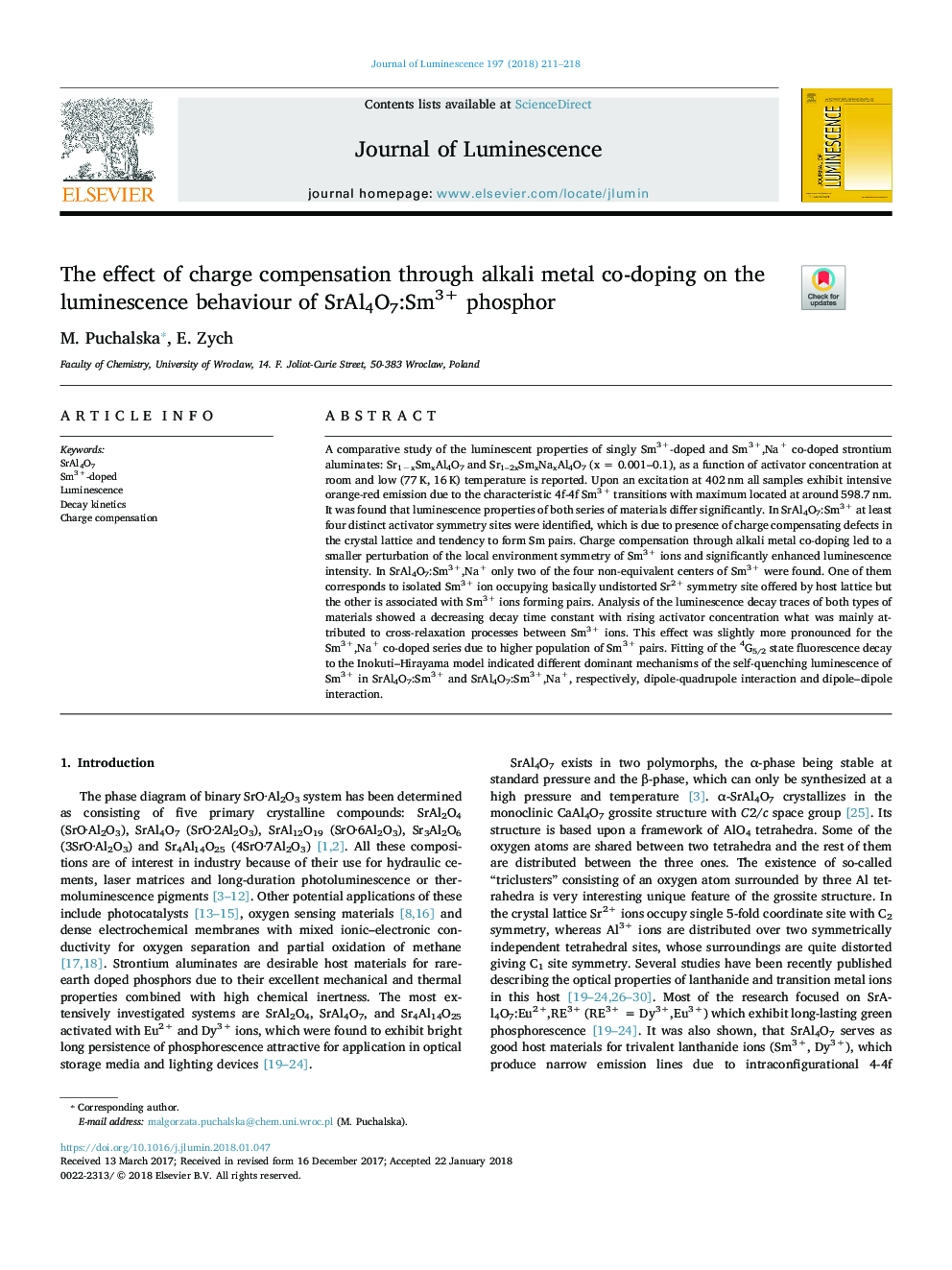| Article ID | Journal | Published Year | Pages | File Type |
|---|---|---|---|---|
| 7840216 | Journal of Luminescence | 2018 | 8 Pages |
Abstract
A comparative study of the luminescent properties of singly Sm3+-doped and Sm3+,Na+ co-doped strontium aluminates: Sr1âxSmxAl4O7 and Sr1-2xSmxNaxAl4O7 (x = 0.001-0.1), as a function of activator concentration at room and low (77â¯K, 16â¯K) temperature is reported. Upon an excitation at 402â¯nm all samples exhibit intensive orange-red emission due to the characteristic 4f-4f Sm3+ transitions with maximum located at around 598.7â¯nm. It was found that luminescence properties of both series of materials differ significantly. In SrAl4O7:Sm3+ at least four distinct activator symmetry sites were identified, which is due to presence of charge compensating defects in the crystal lattice and tendency to form Sm pairs. Charge compensation through alkali metal co-doping led to a smaller perturbation of the local environment symmetry of Sm3+ ions and significantly enhanced luminescence intensity. In SrAl4O7:Sm3+,Na+ only two of the four non-equivalent centers of Sm3+ were found. One of them corresponds to isolated Sm3+ ion occupying basically undistorted Sr2+ symmetry site offered by host lattice but the other is associated with Sm3+ ions forming pairs. Analysis of the luminescence decay traces of both types of materials showed a decreasing decay time constant with rising activator concentration what was mainly attributed to cross-relaxation processes between Sm3+ ions. This effect was slightly more pronounced for the Sm3+,Na+ co-doped series due to higher population of Sm3+ pairs. Fitting of the 4G5/2 state fluorescence decay to the Inokuti-Hirayama model indicated different dominant mechanisms of the self-quenching luminescence of Sm3+ in SrAl4O7:Sm3+ and SrAl4O7:Sm3+,Na+, respectively, dipole-quadrupole interaction and dipole-dipole interaction.
Related Topics
Physical Sciences and Engineering
Chemistry
Physical and Theoretical Chemistry
Authors
M. Puchalska, E. Zych,
